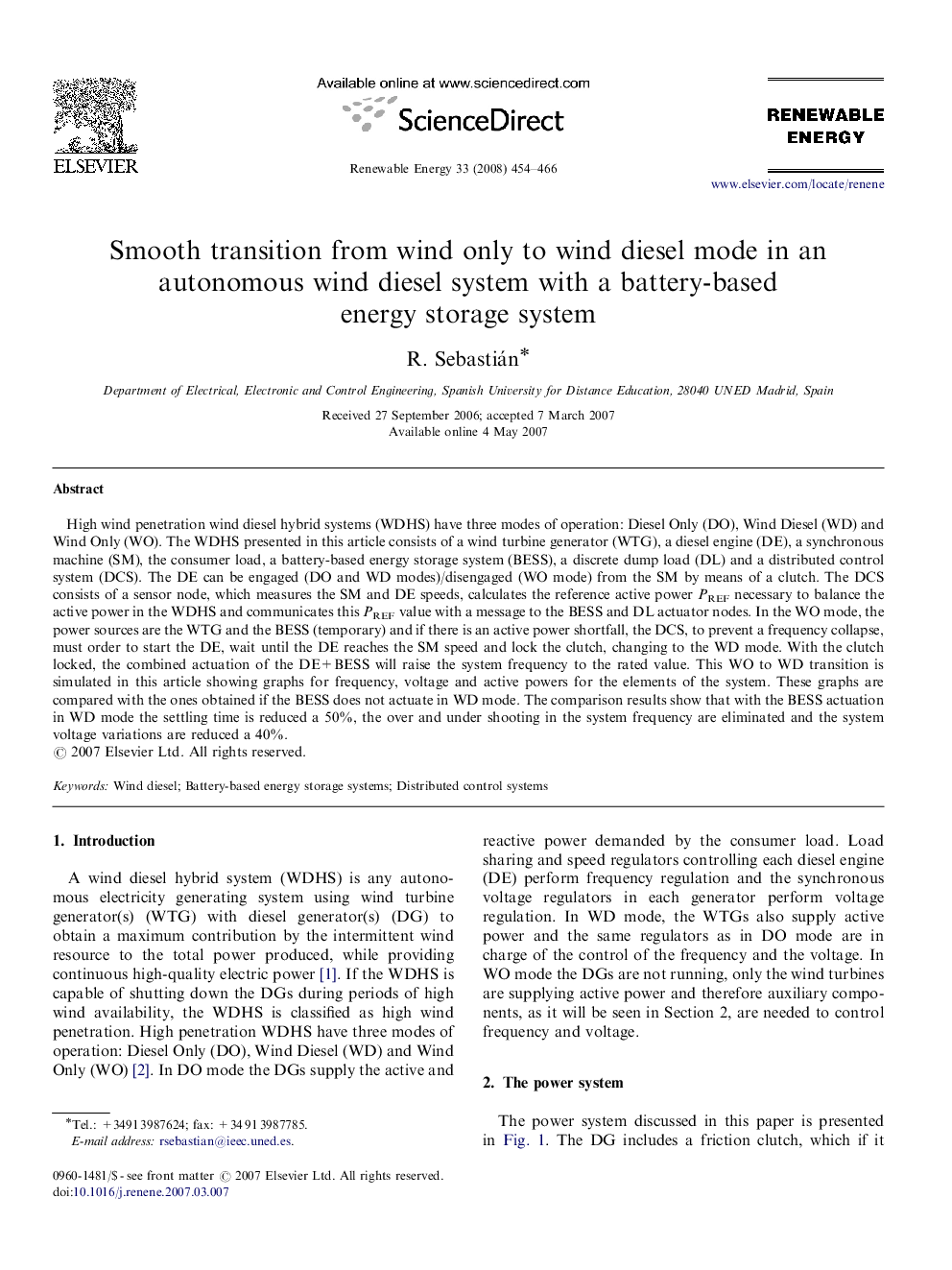| Article ID | Journal | Published Year | Pages | File Type |
|---|---|---|---|---|
| 302716 | Renewable Energy | 2008 | 13 Pages |
High wind penetration wind diesel hybrid systems (WDHS) have three modes of operation: Diesel Only (DO), Wind Diesel (WD) and Wind Only (WO). The WDHS presented in this article consists of a wind turbine generator (WTG), a diesel engine (DE), a synchronous machine (SM), the consumer load, a battery-based energy storage system (BESS), a discrete dump load (DL) and a distributed control system (DCS). The DE can be engaged (DO and WD modes)/disengaged (WO mode) from the SM by means of a clutch. The DCS consists of a sensor node, which measures the SM and DE speeds, calculates the reference active power PREF necessary to balance the active power in the WDHS and communicates this PREF value with a message to the BESS and DL actuator nodes. In the WO mode, the power sources are the WTG and the BESS (temporary) and if there is an active power shortfall, the DCS, to prevent a frequency collapse, must order to start the DE, wait until the DE reaches the SM speed and lock the clutch, changing to the WD mode. With the clutch locked, the combined actuation of the DE+BESS will raise the system frequency to the rated value. This WO to WD transition is simulated in this article showing graphs for frequency, voltage and active powers for the elements of the system. These graphs are compared with the ones obtained if the BESS does not actuate in WD mode. The comparison results show that with the BESS actuation in WD mode the settling time is reduced a 50%, the over and under shooting in the system frequency are eliminated and the system voltage variations are reduced a 40%.
